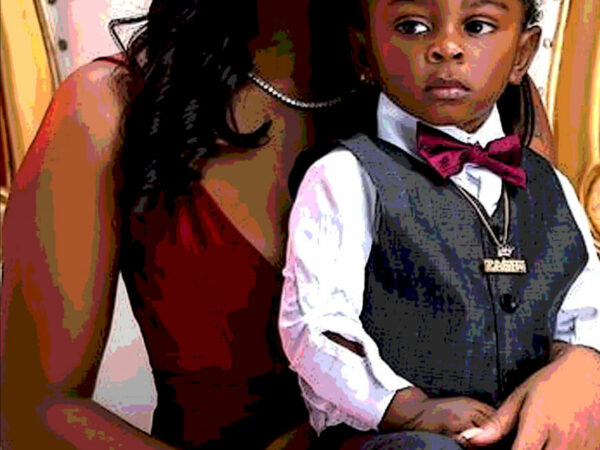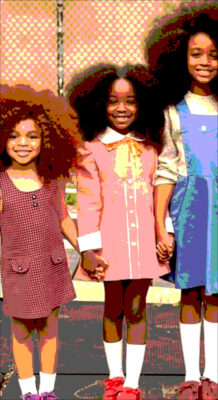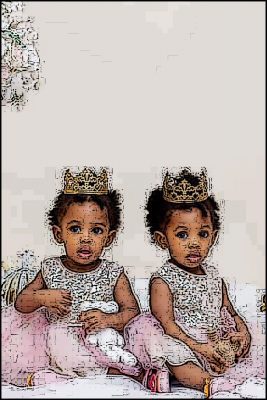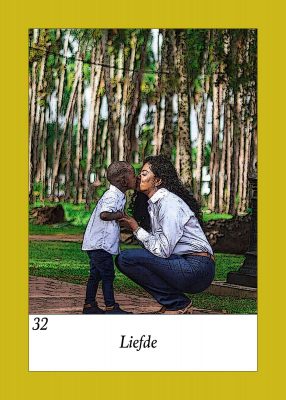The misunderstood messengers of a new era: New Age children and ADHD

Have you or your child been diagnosed with ADD?
If so, you or your child may belong to the group known as new age children.
These unique individuals possess heightened sensory abilities, allowing them to perceive and interpret everything that happens around them.
As a result, they often respond with high activity levels.
However, this constant influx of stimuli can overwhelm them, as they are constantly bombarded with more input than they can effectively process.
The life purpose of children born in the new era.
Instead of attributing the problem solely to the younger generation, let us gather the courage to face the problems in our society and take responsibility to find solutions ourselves.

Children of the new era serve as reflective surfaces.
The children of the new age serve as a reflection of ourselves, showing what radiates from within us, as if we were looking through a mirror. Their actions and behaviours mirror our own. If we are concerned, they will also be concerned.
Should we lack inner harmony, they will experience imbalance. And when grief engulfs us, the new age child will cry in the darkness of the night, while their tears flow without understanding.
In this way, they reveal our emotions, our sincere thoughts and the unresolved issues that linger within us.
Indeed, they possess an innate ability to perceive the true nature of our being and unconsciously assimilate it as their own.
Parents and educators of modern children face a challenging task.
Consider the burden of stress and sadness we sometimes carry with us, which is then reflected back at us by our children, often in an exaggerated way.
This can be particularly challenging because the mirror effect of our children often exacerbates problems. For example, if a mother is stressed and her child reacts by becoming unruly, stress levels escalate. Escaping this negative cycle requires a significant amount of self-awareness. As a parent or educator, it is crucial to understand the dynamics involved, recognise the need to calm oneself first and trust that the child will naturally find peace too.

Children of the new age possess a perceptual antenna that is highly attuned to their environment.
Children of the new age also function as receivers, effortlessly absorbing and experiencing the emotions of those around them. When they enter a room full of people, they intuitively sense the unspoken interactions between the individuals present. They are often unaware that they possess this ability, so they unconsciously absorb a wide range of emotions like a finely tuned antenna. As a result, they feel angry, sad or disappointed without understanding the source of these emotions.
The inability of these children to identify the origin of their feelings serves as evidence that they have absorbed the emotions of others.
An overwhelming flood of emotions
While the mirror and aerial images are still fresh in our minds, let us,
consider how a child of the new era would experience being in a larger gathering, such as a school class. What image emerges in this scenario? Many of us, including myself, imagine a vibrant environment. This is because new age children have a keen awareness of their surroundings and notice every sound and movement. They hear the faintest sneeze or whisper within the group, the distant roar of a plane soaring high in the sky, the persistent hum of a bluebottle stuck against a closed window, and countless other sensory stimuli.
Not only do they possess the ability to witness any event,
but they also have the extraordinary ability to experience any sensation.
As if this remarkable ability were not enough, they even feel the physical discomforts of others within their group. It is not unusual for them to regard these sensations as their own, unaware that they actually come from someone else.
Their perception is keenly attuned to the emotional state of others. They possess an innate ability to detect unspoken feelings, both positive and negative, that pass silently between individuals. The absence of harmony within a group does not escape their powers of perception; they easily detect the underlying, voiceless emotions and instinctively respond to their intuitive impressions in the moment.

Find out if you possess the qualities of a mature new age child by exploring these 6 characteristics.
The topic is ADHD and children of the new age.
The initial reaction to the bombardment can be described as a surge of activity, indicating a state of busyness and possibly the presence of ADHD.
The modern generation of children is constantly exposed to an overwhelming influx of stimuli on a daily basis. This excessive amount of stimuli results in a constant state of overload, as they are consistently exposed to more than they can effectively process.
As a result, these children instinctively look for ways to get rid of this excess and avoid any negative effects.
Reduce stress by engaging in productive activities.
In an attempt to relieve increasing pressure, some children adopt a very active and restless attitude,
where they engage in various activities to dissipate excess sensations. They babble incessantly and are unable to shut up for even a short five-minute break.
By immediately verbalising their experiences, they prevent the influx of new stimuli but externalise and ignore them.
The children of the new age exhibit an incessant need to be in motion and are unable to remain still as they strive to rid themselves of overwhelming excess energy. Their ability to concentrate is severely hampered as they are easily distracted by any kind of distraction.
Consequently, this behaviour is often summed up in the exasperated observation that they are constantly busy, endlessly busy and constantly engaged in a whirlwind of activity.
The remarkable feature that stands out in new age children is their constant activity.
This level of busyness often results in a diagnosis of ADD or ADHD, indicating a hyperactive nature and difficulty in maintaining focus. Moreover, these children show a high level of impulsivity. They usually live at the margins and always want to explore and interact with their environment.
Comparisons have been made between children exhibiting this behaviour and an inexhaustible motor. Attention Deficit Disorder (ADD) emphasises the lack of attention, while Attention Deficit Hyperactivity Disorder (ADHD) includes the additional element of hyperactivity.
Is this behaviour indicative of illness?

The name implies that the active behaviour of today's youth is perceived as unhealthy and requires a cure.
However, when considering the above perspective, it becomes clear that their behaviour, although challenging, is not really pathological, but rather should be seen as a healthy response of the psyche to deal with an abundance of stimuli.
The children of the new era possess greater sensitivity compared to their predecessors,
allowing them to perceive and process a greater amount of information. Instead of relying on medicine as the solution, it is imperative that we undergo a complete societal transformation accompanied by alternative methods of nurturing and educating these children. This approach should prioritise the development of their souls playfully, rather than focusing solely on performance and academic achievement.
In an age full of stimuli, there are children who possess exceptional levels of sensitivity.
Currently, a clash between two major modern trends is emerging.
On the one hand, the younger generation is becoming more perceptive and attuned to stimuli. Therefore, children of the new age need an environment characterised by stillness, creativity, clarity, peace and structure. Unfortunately, these essential elements are often lacking in our environment.
In our evolving society, we can observe two main developments: first, the passage of time, and second, the steady transformation into a society in which a constant flow of stimuli, emotions and information floods us.

As the pace of life accelerates, individuals seek more powerful stimuli to satisfy their emotional needs. As a result, the younger generation is growing up in a society that offers fewer and fewer opportunities and space for their unique expression.
Is it the new age child or society that is really affected by illness?
Allow me to repeat the question with the utmost clarity:
Who is really affected: the child or society? In my opinion, the answer is unequivocal: the increased sensitivity of the modern child is by no means an ailment, but rather a remarkable blessing, albeit a challenge for all parties involved, especially within our current societal framework.
Unfortunately, it seems that our society is far from ready to provide a safe and nurturing environment for individuals with such pronounced sensitivities.
Therefore, instead of adapting society to this new type of child, our society tries to assimilate them through the use of drugs and labels.
If you are labelled ADD or ADHD, it automatically means there is a flaw in you.
This conclusion absolves experts from wondering whether perhaps our society is the one that feels unwell, and not the child. It is not the child that is affected, but society itself that is afflicted.
It is essential to recognise that the upbringing and environment of many children in the new era contribute to various expressions of spiritual development
. It is not uncommon for some of these children to experience distress as a result of their busyness. In some cases (but not all), they might even be thought to be unwell and in need of intervention. However, it is crucial to recognise that this uneven progress stems primarily from the unfortunate circumstance that these sensitive children have to exist in a society that does not respect and understand their unique qualities.
Here are some useful tips on how to support your child in the modern age.

Start by giving a brief explanation:
That your child (along with other new-generation children) effortlessly absorbs information and skills without fully understanding the process.
Teach your child to be introspective and explore: what is the reason behind this emotion I am experiencing? If they cannot put it into words, it is likely that they have taken it from someone else.
Through the process of developing a strong sense of self, your child can gain a deeper understanding of the distinction between their own identity and that of others.
This heightened self-awareness enables them to confidently assert their preferences by saying 'no' when they don't want something and 'yes' when they do. Their choices are not influenced by external expectations, but rather stem from their internal beliefs. In this way, they cultivate an awareness of their real emotions, desires and thoughts.
for further questions
please send me an e-mail
much preferably
Rachida Kacimi (layla-ki)